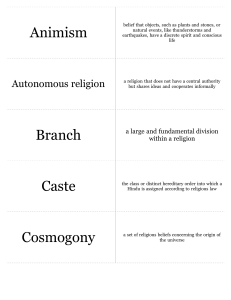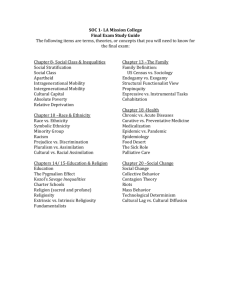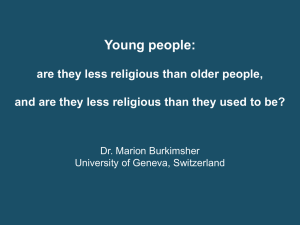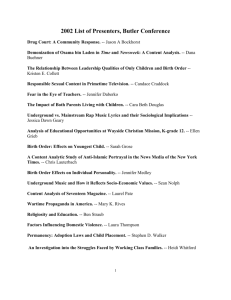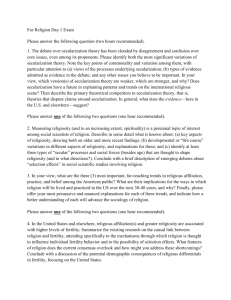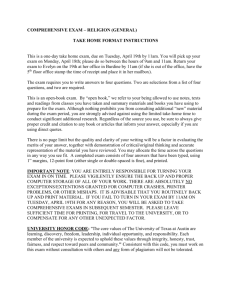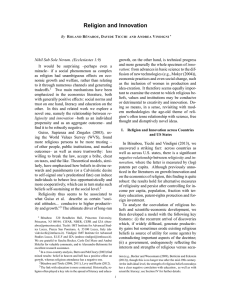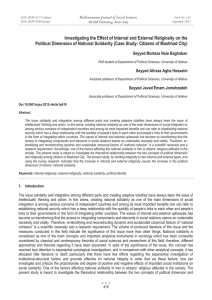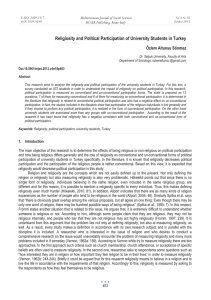Religious Organization and Religiosity
advertisement
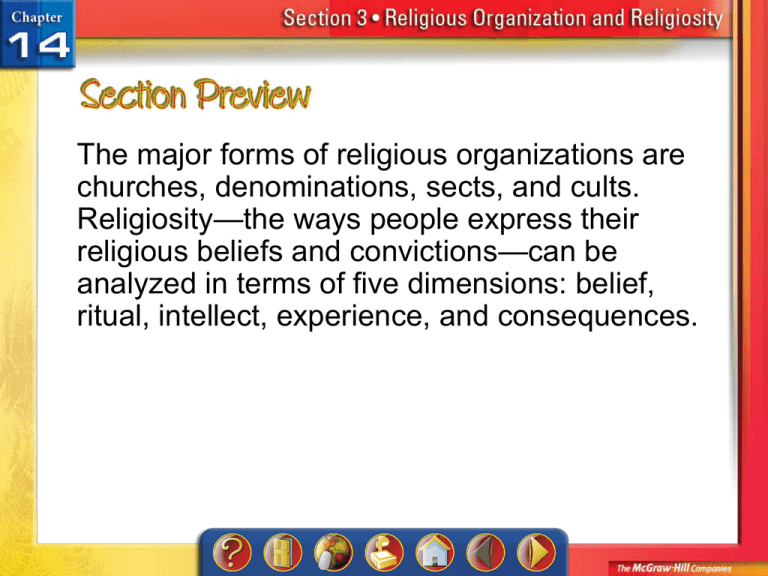
The major forms of religious organizations are churches, denominations, sects, and cults. Religiosity—the ways people express their religious beliefs and convictions—can be analyzed in terms of five dimensions: belief, ritual, intellect, experience, and consequences. Which is NOT a major form of religious organization? A. Denomination B. Church C. Cult D. Sunday 0% A A. A B. B C.0% C B 0% C Religious Organization • Church—a life-encompassing religious organization to which all members of a society belong. • This exists when religion and the state are intertwined. Religious Organization (cont.) • Denomination—one of several religious organizations that most members of a society accept as legitimate. • Membership is voluntary and competition for members between them is acceptable. • Do 14-3 Interactive 1 Religious Organization (cont.) • Sect—a religious organization formed when members of an existing religious organization break away in an attempt to reform the “parent” group. • Cult—a religious organization whose characteristics are not drawn from existing religious traditions within a society. The Amish are a religious ______? A. Sect B. Cult C. Denomination 0% A A. A B. B C.0% C B 0% C • Do 14-3 Interactive 2 Religiosity • Religiosity refers to the types of religious attitudes and behaviors people display in their everyday lives. Public Charities Religiosity (cont.) • The 5 dimensions: – Belief—what a person considers to be true – Ritual—a religious practice that members are expected to perform Religiosity (cont.) – Intellectual dimension—knowledge of one’s faith – Experience—feeling attached to religious expression – Consequences—decisions and commitments made because of their religion Which is NOT a dimension of religiosity? A. Ritual B. Experience C. Academic D. Belief 0% A A. B. C. 0% D. B A B C 0% D C 0% D • church • denomination • sect • cult • religiosity Percentage of Americans Saying Religion is Very Important in Their Lives: 1952–2005 Source: The Gallup Organization, Gallup polls on religion. Membership in Selected Religious Organizations in the United States Source: World Almanac and Book of Facts, 2005. American Church Membership Trends: 1990–1999 Source: Yearbook of American and Canadian Churches, 1999. Public Charities Source: National Center for Charitable Statistics, 2004. Religions of the World Adapted from The State of Religion Atlas, New York: Simon & Schuster, 1993. Gender Inequality in Religion Adapted from The State of Religion Atlas, New York: Simon & Schuster, 1993. church a life-encompassing religious organization to which all members of a society belong denomination one of several religious organizations that most members of a society accept as legitimate sect a religious organization that arises out of a desire to reform an existing religious organization cult a religious organization whose characteristics are not drawn from existing religious traditions within a society religiosity ways in which people express their religious interests and convictions
